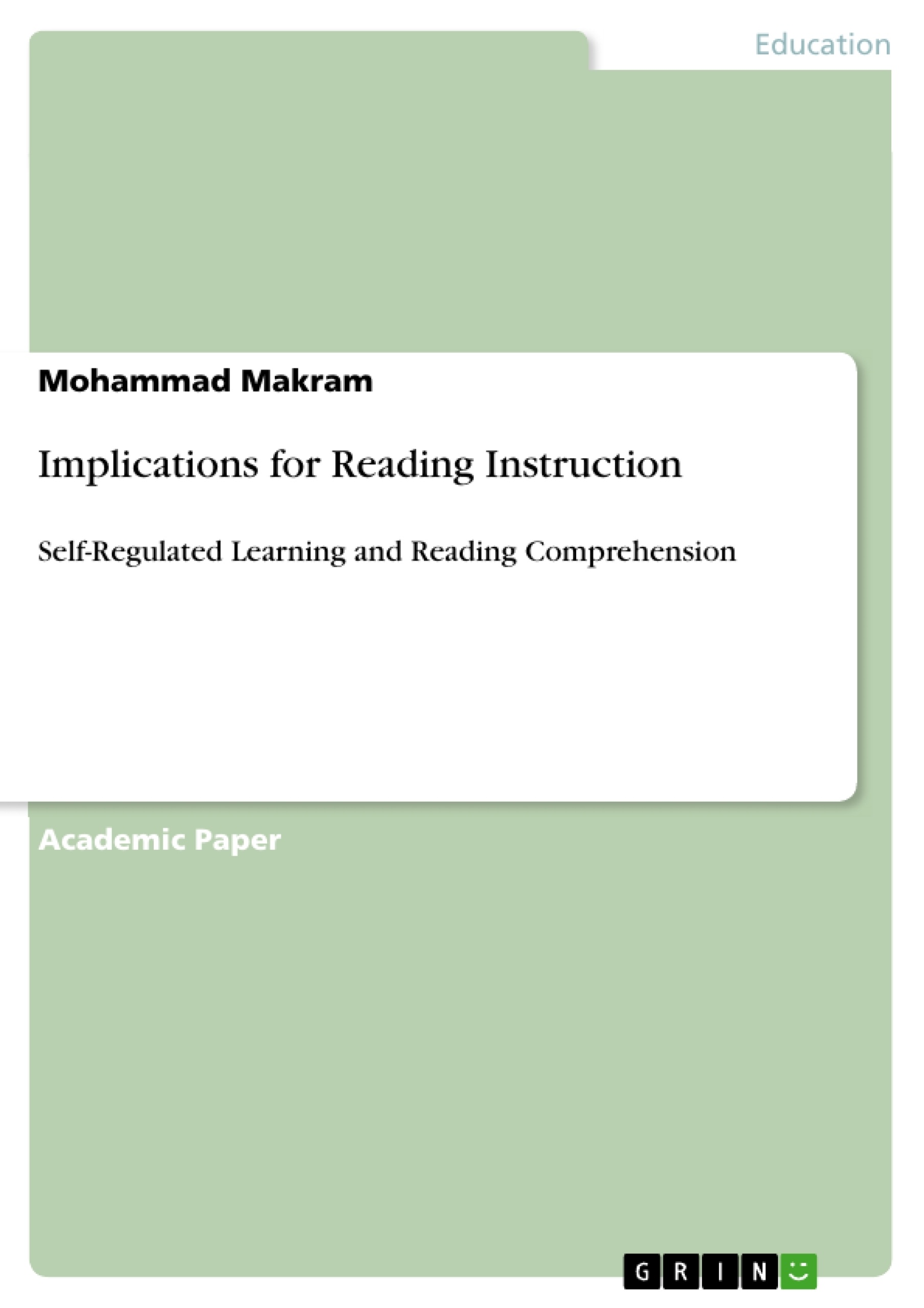This work shows the significance of self-regulated learning with its wide range of reading strategies.
It is reasonable to adopt a new teaching methodology in the light of an approach that fosters students’ independence and motivation. It is the teacher's role to be open-minded toward students’ issues and to give them time and effort to take their personal needs and interests into consideration in language classes.
Table of Contents
- Introduction
- Self-Regulated Learning
- Self-Regulated Learning Strategies (SRLSs)
- The Concept of Reading Comprehension
- Approaches to Teaching Reading
- Self-Regulated Learning and Reading Comprehension: An Integrative Approach
- Reading Comprehension: An Integrative Approach
- Implications for Reading Instruction
- Conclusion
Objectives and Key Themes
This text aims to explore the relationship between self-regulated learning and reading comprehension, providing implications for reading instruction. It analyzes how self-regulated learning strategies can be effectively incorporated into teaching practices to enhance students' reading comprehension abilities.
- Self-regulated learning and its application in educational settings
- The significance of reading comprehension in literacy development
- The role of self-regulated learning strategies in enhancing reading comprehension
- Effective approaches to teaching reading comprehension
- Implications for improving reading instruction based on the integration of self-regulated learning principles.
Chapter Summaries
- Introduction: This chapter introduces the importance of literacy and reading in society, highlighting the significance of reading comprehension. It also discusses the challenges faced in teaching reading, including text-related issues, teaching methods, and students' readiness and motivation.
- Self-Regulated Learning: This chapter delves into the concept of self-regulated learning, its historical development, and its core principles. It explores how self-regulated learning emphasizes student autonomy and engagement in the learning process.
- Self-Regulated Learning Strategies (SRLSs): This chapter examines various self-regulated learning strategies, including metacognitive strategies, motivational factors, and their impact on student learning. It highlights how SRLSs empower learners to take control of their learning and achieve better outcomes.
- The Concept of Reading Comprehension: This chapter defines reading comprehension as the process of deriving meaning from a text. It discusses key comprehension strategies employed by good readers, including previewing, predicting, inferring, making connections, and summarizing.
- Approaches to Teaching Reading: This chapter explores different approaches to teaching reading, contrasting holistic methods with more structured approaches. It provides insights into the diverse methodologies employed in reading instruction.
- Self-Regulated Learning and Reading Comprehension: An Integrative Approach: This chapter examines how self-regulated learning principles can be integrated into reading instruction to enhance comprehension. It provides evidence from research studies demonstrating the effectiveness of this approach.
- Reading Comprehension: An Integrative Approach: This chapter further explores the integration of self-regulated learning principles into reading comprehension instruction. It discusses specific strategies and techniques that teachers can employ to promote student engagement and comprehension.
- Implications for Reading Instruction: This chapter provides practical implications for teachers based on the integration of self-regulated learning into reading instruction. It offers recommendations for designing effective reading lessons and supporting students' reading comprehension development.
Keywords
The main keywords and focus topics of this text include self-regulated learning, reading comprehension, reading instruction, metacognitive strategies, motivational factors, comprehension strategies, and effective teaching methods.
- Citation du texte
- Mohammad Makram (Auteur), 2018, Implications for Reading Instruction, Munich, GRIN Verlag, https://www.grin.com/document/464833



